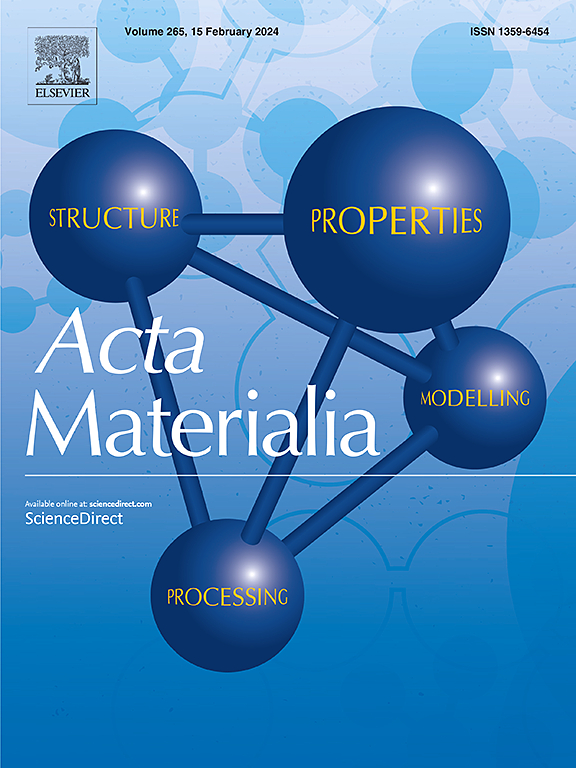Microstructural control across multiple length scales in additively manufactured Ti-6Al-4V via cyclic heat treatments
IF 9.3
1区 材料科学
Q1 MATERIALS SCIENCE, MULTIDISCIPLINARY
引用次数: 0
Abstract
Ti-6Al-4V is a premier titanium alloy widely used across various industrial sectors, thanks to its versatile properties arising from diverse microstructures tailorable via thermomechanical processing (TMP). In contrast, Ti-6Al-4V made by laser powder-bed fusion (LPBF) additive manufacturing (AM) lacks the same microstructural diversity and precise in-process microstructural control, primarily due to rapid thermal cycling inherent to LPBF. In the as-built state, the microstructure predominantly comprises acicular α′ martensites within columnar prior-β grains, which often fails to achieve mechanical properties comparable to those obtained through TMP. This necessitates the use of post-heat treatments as a critical step to ensure superior and reliable mechanical performance. The present study explores cyclic heat treatment (CHT) as an effective strategy for AM-specific microstructural control across multiple length scales, including prior-β grains, primary α, and secondary α. By varying peak temperature, number of cycles, and cooling rate, the initial microstructure dominated by α′ martensite in columnar prior-β grains rapidly evolves into diverse microstructures comparable to those achieved via TMP. These include lamellar α+β in equiaxed prior-β grains, globular α in near-equiaxed prior-β grains, and bimodal microstructure comprising a mixture of globular α and lamellar α+β/acicular α′. The accelerated microstructural evolution driven by the repetitive α↔β phase transformations induced by CHT facilitates processes like epitaxial recrystallisation and α globularisation. The developed CHT protocol provides a framework for microstructural engineering, enabling mechanical property optimisation and supporting broader industrial adoption of LPBF Ti-6Al-4V.


通过循环热处理增材制造Ti-6Al-4V的多长度尺度的显微组织控制
Ti-6Al-4V是一种主要的钛合金,广泛应用于各种工业领域,这要归功于其通过热机械加工(TMP)定制的多种显微结构所产生的多种性能。相比之下,通过激光粉末床熔合(LPBF)增材制造(AM)制造的Ti-6Al-4V缺乏相同的微观结构多样性和精确的过程中微观结构控制,主要是由于LPBF固有的快速热循环。在构建状态下,微观组织主要由柱状优先-β晶粒内的针状α′马氏体组成,往往无法获得与TMP相比较的力学性能。这就需要使用后热处理作为确保卓越和可靠的机械性能的关键步骤。本研究探讨了循环热处理(CHT)作为am特异性微观结构控制的有效策略,可以跨越多个长度尺度,包括先前的-β晶粒,初级α和次级α。通过改变峰值温度、循环次数和冷却速率,以柱状α′马氏体为主的初始组织迅速演变为与TMP相媲美的多种组织。这些微观结构包括等轴先验-β晶粒中的片层α+β,近等轴先验-β晶粒中的球状α,以及由球状α和片层α+β/针状α '混合组成的双峰微观结构。由CHT诱导的重复α↔β相变所驱动的加速微观结构演化促进了外延再结晶和α球化等过程。开发的CHT协议为微结构工程提供了框架,实现了机械性能优化,并支持LPBF Ti-6Al-4V的更广泛的工业应用。
本文章由计算机程序翻译,如有差异,请以英文原文为准。
求助全文
约1分钟内获得全文
求助全文
来源期刊

Acta Materialia
工程技术-材料科学:综合
CiteScore
16.10
自引率
8.50%
发文量
801
审稿时长
53 days
期刊介绍:
Acta Materialia serves as a platform for publishing full-length, original papers and commissioned overviews that contribute to a profound understanding of the correlation between the processing, structure, and properties of inorganic materials. The journal seeks papers with high impact potential or those that significantly propel the field forward. The scope includes the atomic and molecular arrangements, chemical and electronic structures, and microstructure of materials, focusing on their mechanical or functional behavior across all length scales, including nanostructures.
 求助内容:
求助内容: 应助结果提醒方式:
应助结果提醒方式:


